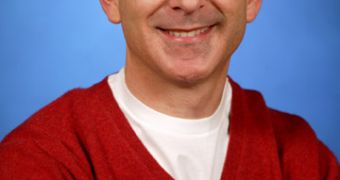There is not one single cohesive group building Windows 7, the successor of Windows Vista, revealed Senior Vice President Steven Sinofsky, Windows and Windows Live Engineering Group. Instead, the engineering entity is made up of no less than 25 different teams, each hammering away at one specific segment of the next iteration of the Windows 7. Sinofsky referred to the 25 groups with the dubbing Feature Teams. At the head of the Windows 7 project is, of course, Sinofsky and Senior Vice President Jon DeVaan, Windows Core Operating System Division.
"The Windows engineering team 'proper' is jointly managed by Jon and me. Jon manages the core operating system, which is, among many things, the kernel, device infrastructure, networking, and the engineering tools and system (all of which are both client and server). I am part of the Windows client experience team which develops, among many things, the shell and desktop, graphics, and media support," Sinofsky revealed.
The bottom line is that no less than 25 teams are working on Windows 7, but separately, while attempting to produce a consistent operating system. Of course that the Windows 7 development efforts are not isolated exclusively to the feature teams, and that there is sufficient interaction between them to ensure the "togetherness" of the platform, as Sr. VP of the Windows and Windows Live Engineering Group put it.
"Windows 7's feature teams sound a lot like parts of Windows with which you are familiar," Sinofsky explained. "Because of the platform elements of Windows we have many teams that have remained fairly constant over several releases, whereas some teams are brand new or represent relatively new areas composed of some new code and the code that formed the basis of the team. Some teams do lots of work for Server (such as the VM work) and some might have big deliverables outside of Windows 7 (such as Internet Explorer)."
According to Sinofsky, the 25 feature teams are necessary from a manageability point of view. With parts of Windows 7 being owned by relatively small groups of people, the coordination in terms of the building tasks and the overall development process is maintained at optimal levels. On average, a team has some 40 members. In this context, simple math reveals that there are in excess of 1,000 people working directly on Windows 7, but there is no telling how many are actually contributing to the operating system.
Sinofsky indicated that "some of the main feature teams for Windows 7 include (alphabetically): Applets and Gadgets; Assistance and Support Technologies; Core User Experience; Customer Engineering and Telemetry; Deployment and Component Platform; Desktop Graphics; Devices and Media; Devices and Storage; Documents and Printing; Engineering System and Tools; File System; Find and Organize; Fundamentals; Internet Explorer (including IE 8 down-level); International Kernel & VM; Media Center; Networking - Core; Networking - Enterprise; Networking - Wireless Security; User Interface Platform and Windows App Platform."
At the same time, Sinofsky disputed claims that the Windows group was too numerous, thus managing to cause engineering problems simply because of sheer size. Obviously, any engineering issues would result in troubles for the end users, via a product that would make it to the market while not meeting the quality standard, which could be achieved through the collaboration of a smaller number of engineers.
"It takes a set of people to build Windows and it is a big project. The way that I look at this is that our job is to have the Windows team be the right size - that sounds clich? but [what] I mean by that is that the team is neither too large nor too small, but is effectively managed so that the work of the team reflects the size of the team and you see the project as having the benefits we articulate," Sinofsky argued.

 14 DAY TRIAL //
14 DAY TRIAL //